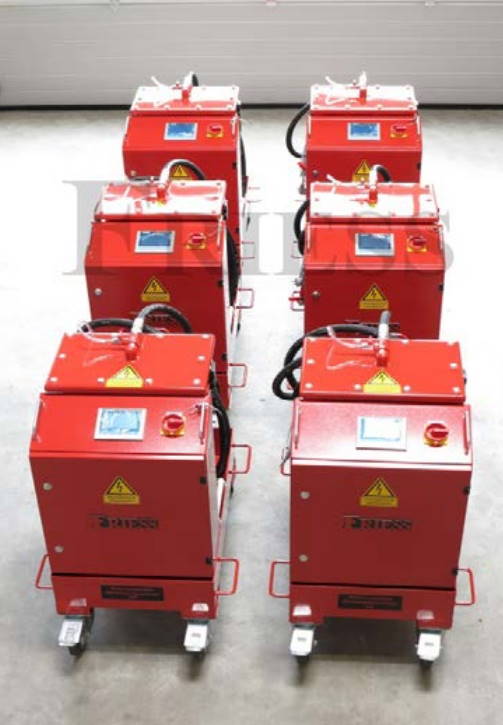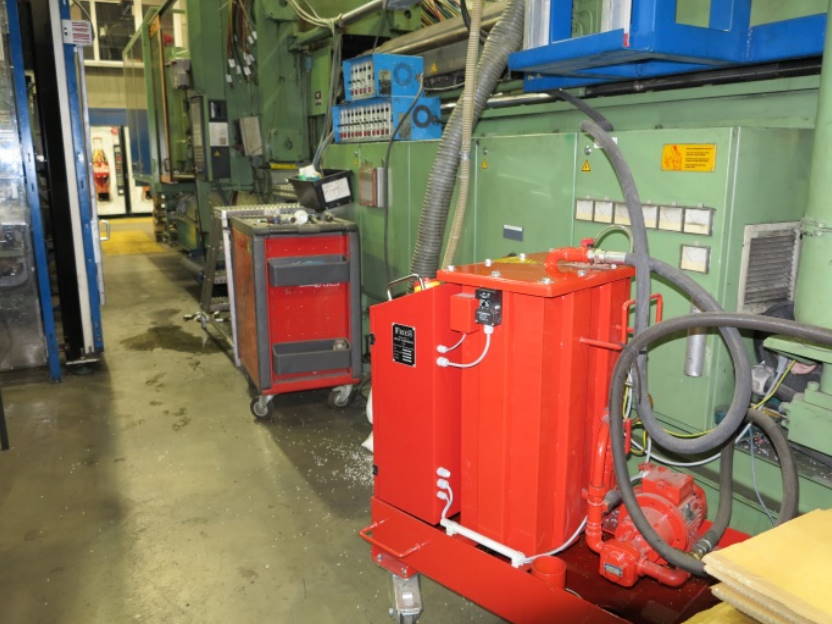FRIESS-EFC prevents trouble at hydraulic systems
A big manufacturer of packaging systems made of plastic uses 30 injection molding machines. The manufacturer of the injection molding machines recommends to change the hydraulic oil once per year although the machines are equipped with hydraulic filter systems. Because of the big oil volume 1000 l – 3000 l per injection molding machine the company decided to change the oil only once every four years.
Situation
The longer use of the hydraulic oil causes hydraulic failure and malfunction of servo valves, especially in older injection molding machines. The maintenance team reported that an eleven year old injection molding machine had two hydraulic failures per week. Because of the high cost for maintenance and repairing and the extreme cost for production loss caused by hydraulic failures the maintenance manager looked for an oil cleaning system in order to eliminate the basic cause of the hydraulic failures. The manufacturer of the injection molding machines recommended to change the oil once per year. Because of the high cost the maintenance team did not follow this recommendation. Instead of changing the oil once per year they bought one bypass filter system. The analysis of the oil showed that the cleanliness of the oil was improved. Anyway the number of failures in the hydraulic system remained on a high level. The installation of an improved bypass filter system with filter cartridge based on cellulose did not improve the situation.
Solution
The maintenance manager did a short research in the internet in order to find other cleaning methods in order to improve the service life of the oil and in order to reduce downtime. Although the experience with different filter systems was not satisfying they asked FRIESS GmbH in order to provide information about electrostatic oil cleaning. The maintenance manager was not convinced that the electrostatic cleaning method could be helpful. In order to test the performance of the electrostatic oil cleaner the maintenance manager rented an electrostatic oil cleaner model D8 for three months. The analysis of the oil during the test period showed only light improvement of the cleanliness of the oil. Although the oil was still contaminated with oxydation products, the cleaning elements of the electrostatic oil cleaner D8 showed after 2000 h of operation an extreme load with sludge, oxydation products and resin.
 Oxydation product and sluge on the surface of the cleaning elements
Oxydation product and sluge on the surface of the cleaning elements
 the electrodes, is completely covered with sludge
the electrodes, is completely covered with sludge
 The sludge collected on the surface of the cleaning elements was settled on the surface of the hydraulic components
The sludge collected on the surface of the cleaning elements was settled on the surface of the hydraulic components
 The cleaning elements are totally covered with sludge
The cleaning elements are totally covered with sludge
Result
Although the analysis of the oil didn’t show a serious improvement, the production team was able to operate the plastic injection molding machine two weeks after the installation of the electrostatic oil cleaner without any hydraulic failure. Before electrostatic cleaning was installed in average every week the machine stopped two times because of hydraulic failure. Because of the installation of the electrostatic cleaning system the number of failures was reduced from two failures every week down to zero. The oil analysis, which was done during the cleaning process, was not meaningful for this application.
Because of the age of the injection molding machine of 11 years and the long lifetime of the oil a lot of oxydation products and resins did settle in the hydraulic system. The electrostatic oil cleaner model D8 removed resins and sludge from oil in the first step. The clean oil was now able to solve settled oxydation product and sludge from valves, pumps, cylinders and so on. The same time, that the electrostatic oil cleaner model D8 removed resins and oxydation product from the oil, already settled oxydation products were solved from the surface of the hydraulic system and were kept in the oil in suspension.

The suspended sludge was than pumped into the electrostatic oil cleaner where it was collected on the surface of the cleaning elements. The cleaning process reduced the content of sludge in the hydraulic system although the oil analysis did not show any improvement.
Because of the extremely positive results at the first machine the customer ordered further five electrostatic oil cleaning machines in order to clean the hydraulic system in the machines with the most hydraulic failures and problems.
 Electrostatic oil cleaning system during operation
Electrostatic oil cleaning system during operation
